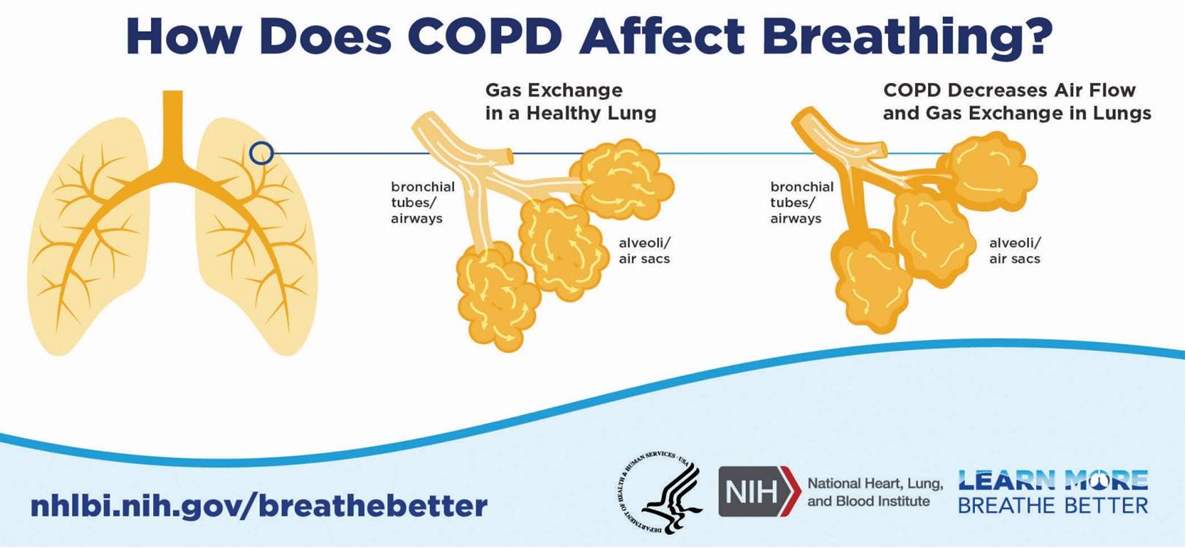November marks the month of chronic obstructive pulmonary disease (COPD) awareness and is an issue of great concern in Jordan. COPD refers to a group of diseases that can cause blocked airflow and in Jordan, where 70.3 percent of men between the ages of 18–44 are smokers, the age-adjusted prevalence of COPD in smokers stands at 15.2 percent, according to the Centers for Disease Control and Prevention. The harmful effects of smoking have been well established, and COPD is not the only complication. In order to help reduce its prevalence, it is important to understand the disease and risk factors associated with it.
اضافة اعلان
 Anatomy of the lungs
Anatomy of the lungs
Before we can discuss COPD, it is important to understand the anatomy of the respiratory system and the importance of each structure within it. Generally speaking, the respiratory system can be divided into two broad categories: the upper and lower respiratory tracts. The former consists of the nose and mouth, through which air enters the body and travels down the throat (or, more formally, the pharynx). The latter consists of the windpipe (or trachea) which receives air from the pharynx.
From the trachea, air flows down two branches into each lung. These branches are known as bronchi that further subdivide into smaller and smaller branches until they become bronchioles. At the end of the bronchioles are tiny sacs called alveoli where gas exchange can occur.
What is COPD?
Are previously mentioned, COPD is not a single disease; it is a collection of diseases that include chronic inflammatory lung disease that results in obstructed airflow. Of these diseases, emphysema and chronic bronchitis are the two most common.
Chronic bronchitis is simply the long-term (chronic) inflammation of the bronchi (bronchitis). Chronic bronchitis is defined as coughing with mucus for at least three months a year for two years in a row. The symptoms of chronic bronchitis are similar to that of acute bronchitis, which is commonly seen in chest colds.
Emphysema is another common disease of COPD and causes shortness of breath. In patients with emphysema, the alveoli of the lungs are damaged and over time may weaken and rupture. This will ultimately reduce the surface area of the lungs, resulting in inefficient gas exchange.
People with COPD most commonly have the symptoms of chronic bronchitis and emphysema together, further increasing breathing complications. Asthma, a chronic inflammatory disorder that results in airway obstruction, is not uncommon for COPD patients. Although it further complicates the symptoms of COPD, asthma is reversible and therefore not considered to be COPD.
Complications
Chronic bronchitis in its most severe form may result in what is known as “blue bloaters”, a collection of severe complications that can cause the patient to appear blue. This is called cyanosis and is the result of inadequate oxygen circulating the body (hypoxia). Additionally, these individuals are more likely to be obese and may have signs of heart failure. Less severely, they will have a recurrent cough that produces mucus, a high breathing rate, and difficulty breathing especially when performing physical activities.
Emphysema in its most severe form may result in a condition called “pink puffers”, which is a collection of common symptoms. The main features of include sufferers appearing thin with a barreled chest, which is the result of hyperinflation. Additionally, they may purse their lips to help with breathing and minimize coughing.
In general, COPD symptoms can range in severity. Respiratory infections are more common in people with COPD, including the common cold and pneumonia, resulting in further difficulty breathing and damage to lung tissue.
Furthermore, COPD patients are at higher risk of developing lung cancer and may have higher blood pressure in the lungs, resulting in what is known as pulmonary hypertension. COPD also can affect other organs like heart. Although the mechanism is not fully understood, COPD has been shown to increase the risk of heart disease, potentially including heart attacks.
Risk factors
Long-term smoking is the most significant risk factor for COPD and is the leading cause of COPD for many. The longer and more you smoke, the greater the risk of developing COPD becomes. All forms of tobacco smoke can result in damage, including hookahs and being exposed to second-hand smoke.
Asthma is also another risk factor for developing COPD. The mechanism in which people with asthma are at greater risk is still not fully understood. Although the risk is not nearly as high when compared to smoking, those who smoke and have asthma are at even greater risk of developing COPD.
Generally speaking, any inhalation of toxins and chemicals — which tobacco smoke in full of — can cause irritation and damage to the lungs, including long-term exposure to long-term to chemical vapors, fumes, and dust.
Prevention
Unlike most diseases, COPD often has a clear cause and can be managed. Never (or quitting) smoking is the best course of action to decrease your risk of COPD. For those who are exposed to occupational risk, wearing safety equipment is key. Finally, regular vaccination against the flu and pneumococcal pneumonia is crucial.
Read more Health





